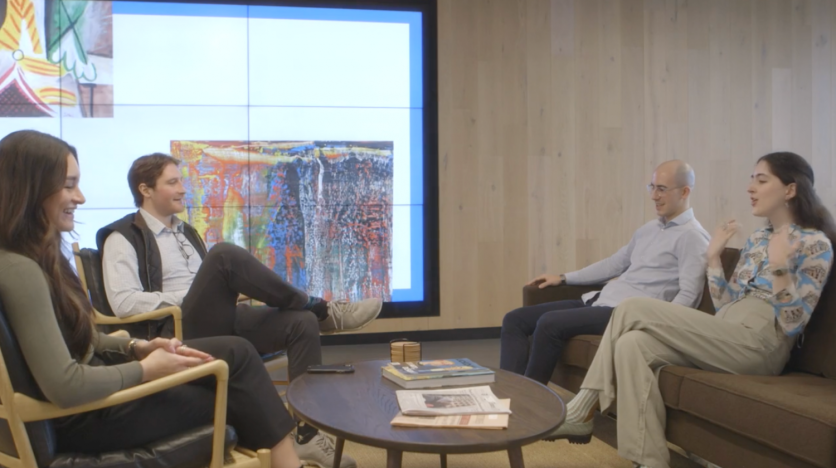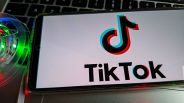
Two years ago, Masterworks made headlines by raising a massive $110 million Series A round, which gave the company unicorn status just two years after its founding. This investment, led by Left Lane Capital, validated the Masterworks team's vision to democratize art investing, positioning the startup to catapult to where it is today.
Essentially, Masterworks has created a new category, as a platform that offers fractional shares of in-demand artwork, which has opened up the asset class to the masses. Previously, the blue-chip art trade had notoriously high barriers to entry. As of writing, the company has purchased 300 paintings and manages over $800 million in assets. Over 700,00 investors have joined the platform, with the ability to purchase shares for as little as $20.
One of the greatest challenges for any company growing as fast as Masterworks is maintaining a vision. They now have 200 employees, and over half of those joined in the last year. We spoke with Jordan Goldstein, Head of Talent Acquisition, to understand how they keep the team unified and working toward a common goal.
Player-coach mentality
The traditional approach at most companies of Masterworks's scale is to introduce multiple layers of management, which makes those at the top of the pyramid inaccessible to most employees.
Goldstein says that Masterworks has instead built a relatively flat organizational structure, where the managers take on a player-coach mentality. Everyone works together to achieve their common vision with hands-on collaboration.
"They're not afraid to roll up their sleeves and get involved in the nitty-gritty alongside the rest of the team," she says. "No task is considered too big or too small for anyone here."
Today we lunched and we learned with our amazing Acquisitions Team! pic.twitter.com/bPMck2BhFZ
— Masterworks (@Masterworks) February 15, 2022
Part of the reason this works effectively is because all their staff is expected to work in their New York offices every day. This is against the trend for many startups, but it enables both senior managers and junior team members to build strong professional relationships and even friendships. "We all work in person every day, so we are a pretty tight-knit group," adds Jordan. "I'd say everyone is friends inside and outside of the office."
Climb an internal ladder
Jordan Goldstein herself started as an intern at Masterworks and now leads the company's talent acquisition efforts. She tells us she is not alone in this regard - there are many examples of other interns rising through the ranks to earn management positions. "One-third of our management team started at Masterworks as an individual contributor," she says. This is uncommon for companies scaling as fast as Masterworks, where the standard is to hire managers from the outside as additional layers of leadership are needed. This can, however, breed resentment, as existing employees may feel their opportunities for growth are limited. Masterworks's commitment to promoting from within cultivates a strong sense of loyalty and engaged motivation at the company. Members of the team know that if they work hard and contribute toward the unified vision, then they'll be rewarded. It's easier to see yourself at a company long term if you know you won't be stuck in the same position.
Find those with passion
When a company plans to disrupt an industry, it's important to recruit employees who deeply care about the problem that the company solves, but it's also critical to find talent that has the necessary skills. For Masterworks, this presents a challenge, because of the uncommon combination of expertise types required. They want individuals with both exceptional analytical skills and a profound familiarity with the intricacies of the art market. People with strengths in tech, data, finance and art can hit the ground running and fit into the team easily. "By combining the power of data-driven decision making with the qualitative feedback and expertise of our art specialists," says Goldstein, "we have the privilege of gaining a holistic understanding of art market dynamics." A core part of Goldstein's job is finding these individuals, as should they hire too many people without the passion for art, the unification of the team would be lost. On the other hand, new recruits can also cross-pollinate skills within the team, as the company encourages employees to share their knowledge with each other. One way Masterworks has done this effectively is through mergers and acquisitions. In December 2022, they acquired Arthena, a technology firm that creates machine learning based solutions for the art market. Goldstein sees this as an important victory. "This acquisition has bolstered our team's expertise and amplified our ability to analyze art market data with precision," she adds.
Out of office
Because the entire team is based in New York, Masterworks is able to organize regular company outings. This enables the team to get to know each other on a deeper level. Due to the nature of the company, a passion for art is a shared value across the entire organization. They often visit local museums, with guided tours led by their own art specialists, for example.
Yet beyond this, there are many events simply for fun, such as cooking, trivia nights and happy hours.
A sign of a good working culture is when team members voluntarily choose to spend time together outside of work. Goldstein tells us that "it's been even more exciting to see our employees take the initiative to create new clubs on their own - the Masterworks running club meets weekly and is planning to run a 5k this summer."
Summary
Masterworks has grown exceptionally quickly in recent years, and speaking to Jordan Goldstein, the company's Head of Talent Acquisition, it's clear how they've maintained a unified vision along the way.
Here are the key takeaways for other tech startups in high growth mode:
- Player-coach mentality - Ensure managers get involved with the team and sit alongside them.
- Climb an internal ladder - Build a track record of promoting from within, so the team has something to work toward.
- Find those with passion - Don't hire only based on skills, but ensure that new recruits cares about your mission.
- Out of office - Make time for the team to bond outside of work-related events.
ⓒ 2025 TECHTIMES.com All rights reserved. Do not reproduce without permission.




